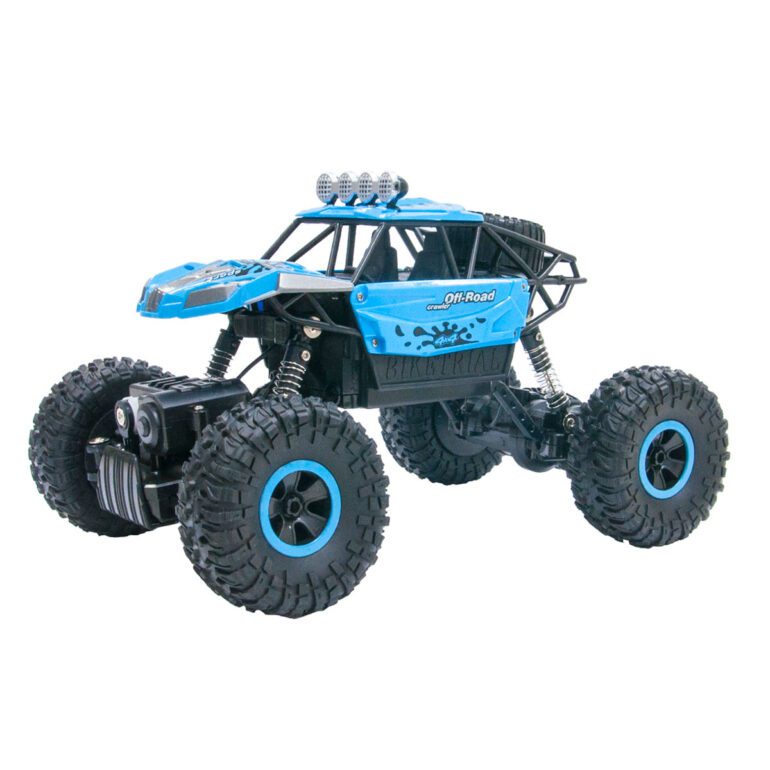TL;DR:
- Reinforcement learning allows robots to learn new skills through trial and error.
- UC Berkeley researchers use a pre-trained “foundation model” to accelerate the learning process.
- A small-scale robotic rally car learns to race after just 20 minutes of practice.
- Manual driving is used to teach robot collision avoidance skills.
- The robot utilizes a low-resolution camera and basic state estimation for autonomous racing.
- The system learns the concept of a “racing line” for optimal speed through corners.
- The robot learns to over-steer and drift during turns for faster rotation.
- It can distinguish between different ground characteristics and favor high-traction surfaces.
- A reset mechanism helps the robot overcome obstacles and continue training autonomously.
- The robot achieves aggressive driving comparable to human experts in indoor and outdoor environments.
- Deep reinforcement learning combined with appropriate pre-training shows promises for real-world policy learning.
- More work is needed for safe implementation on a larger scale.
Main AI News:
Robots, lacking the vast reservoir of life experience that humans possess, face significant challenges when attempting to acquire new skills. Reinforcement learning has emerged as a powerful technique for enabling robots to learn through trial and error.
However, when it comes to learning end-to-end vision-based control policies, such as navigating complex environments, robots encounter substantial hurdles due to the unpredictable nature of the real world. Understanding this requires a considerable investment of effort, rendering the process time-consuming.
Addressing this issue, researchers at UC Berkeley have devised a clever solution that mirrors the strategies employed by humans. Rather than starting from scratch, they leverage a “foundation model” pre-trained on robots autonomously driving themselves. By capitalizing on this prior knowledge, the researchers successfully enabled a small-scale robotic rally car to teach itself how to race on indoor and outdoor tracks, achieving performance levels on par with human experts after just 20 minutes of practice.
The initial pre-training phase involves manually driving a robot, not necessarily the one intended for the task at hand, through various environments. The objective here is not to develop the robot’s ability to navigate courses swiftly but rather to impart the fundamentals of collision avoidance.
Equipped with this pre-trained “foundation model,” the rally car no longer has to start from scratch. Instead, it can be placed on the desired course, driven slowly once to indicate the desired path, and subsequently operate autonomously to train itself to progressively increase its speed.
Armed with a low-resolution, front-facing camera, and rudimentary state estimation capabilities, the robot endeavors to reach the subsequent checkpoint on the course as expeditiously as possible. This pursuit has led to the emergence of intriguing behaviors.
Notably, the system grasps the concept of a “racing line,” adeptly navigating a smooth trajectory through laps while maximizing speed during tight corners and chicanes. The robot learns to maintain velocity as it approaches the apex, followed by sharp braking and acceleration to optimize driving duration. In low-friction environments, the policy acquires the skill of slight over-steering during turns, deftly drifting into corners to achieve rapid rotation without requiring braking.
Moreover, in outdoor settings, the learned policy exhibits the ability to discern ground characteristics, favoring smooth, high-traction surfaces along concrete paths over areas obstructed by tall grass, which hinders the robot’s motion.
Another noteworthy aspect of this research is the incorporation of a reset mechanism, which is crucial for real-world training scenarios. While resetting a failing robot is a straightforward task in a simulated environment, it becomes more challenging outside of the simulation. In real-world scenarios, a failure could potentially halt the training process.
To circumvent this, the researchers developed a reset feature. If the robot remains immobile for at least three seconds, moving less than 0.5 meters, it recognizes that it is stuck and initiates a simple behavior pattern: random turning, backing up, and subsequent forward movement. This iterative process allows the robot to free itself from unfavorable situations.
In both indoor and outdoor experiments, the robot showcased impressive progress, achieving aggressive driving capabilities comparable to those of human experts in a remarkably short span of just 20 minutes of autonomous practice. This outcome serves as a robust validation of the effectiveness of deep reinforcement learning for acquiring real-world policies, even when utilizing raw images as input.
By combining appropriate pre-training with an autonomous training framework, the researchers believe that this approach can indeed serve as a viable tool for future learning endeavors. Although implementing such techniques on a larger scale necessitates further refinement and careful considerations of safety, this little car represents an important step in the right direction, rapidly paving the way for future advancements.
Conlcusion:
The advancements in deep reinforcement learning showcased by UC Berkeley researchers and their successful application in training a small-scale robotic rally car hold significant implications for the market. The ability to teach robots new skills through trial and error, coupled with pre-training techniques, paves the way for accelerated learning and improved performance in various industries.
This breakthrough demonstrates the potential of leveraging autonomous training frameworks and raw image inputs to develop real-world policies efficiently. As these technologies mature and become safer for larger-scale implementation, businesses can anticipate enhanced automation capabilities, increased operational efficiency, and potentially transformative applications across sectors such as manufacturing, logistics, and transportation.
The rapid progress in robotic learning showcased in this research serves as a catalyst for future innovation, fueling the market’s pursuit of advanced autonomous systems and the integration of artificial intelligence in various business domains.

